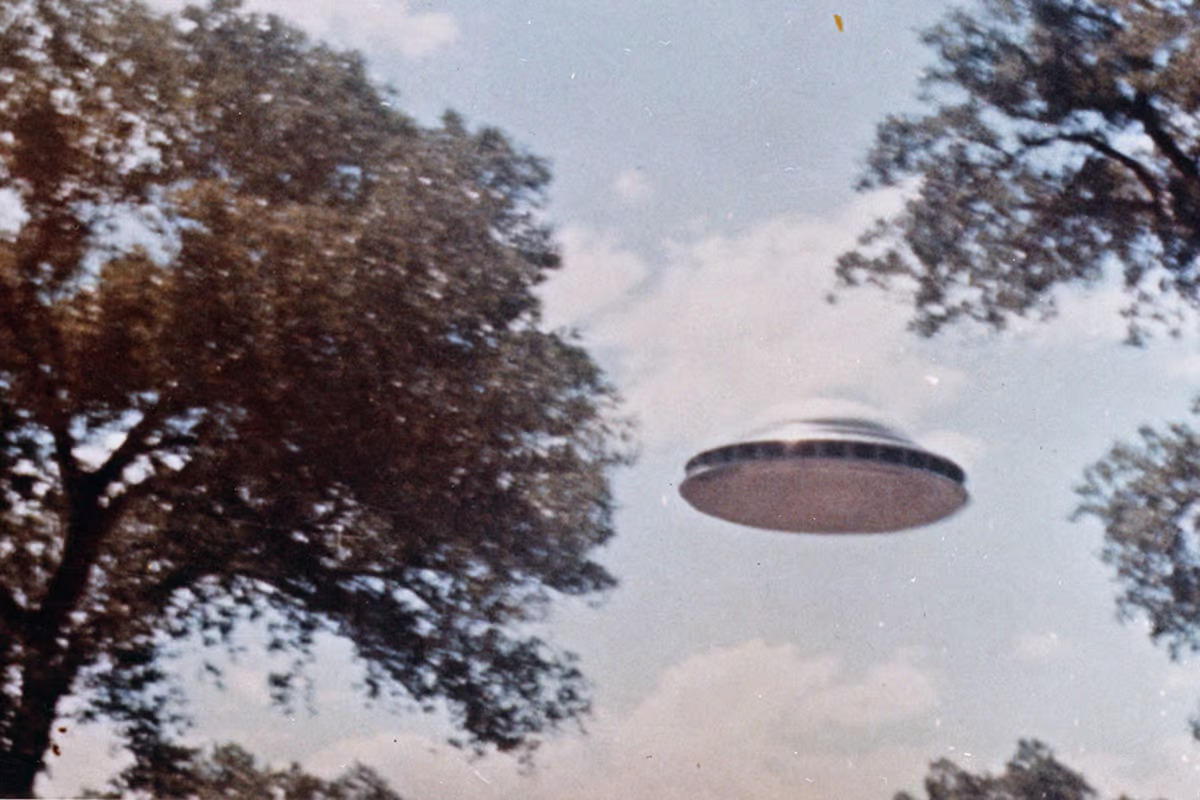 One of the most famous photographs of an alleged UFO – though this one has been thoroughly debunked. National Archives, Records of Headquarters US Air Force –
One of the most famous photographs of an alleged UFO – though this one has been thoroughly debunked. National Archives, Records of Headquarters US Air Force –
Although humans have been spotting weird stuff in the sky for millennia, the modern UFO craze really took off in the mid-20th century. Arguably, pilot Kenneth Arnold started it all in 1947 with his claim of seeing several “saucer-like aircraft” in formation, which birthed the term flying saucers. Just a few weeks later, the infamous “Roswell” incident occurred and pop culture never recovered.
[Editor’s Note: Wikipedia says “Corona (northwest of Roswell) is the closest populated community to a purported UFO crash in 1947, approximately 30 miles (48 km) to the southeast. The rancher who found the crash first came to Corona to report it to a few residents, before going to Roswell to tell officials there.”]
For decades, the topic of UFOs was relegated to red twine-covered pinboards of aspiring Fox Mulders, but in the last decade it seems the public – and importantly, the US government – has started taking them seriously. In 2017 the New York Times released three videos captured by US Navy fighter jets showing strange objects zipping around the skies in ways that known aircraft couldn’t handle.
The Pentagon later confirmed their authenticity, with the Office of the Director of National Intelligence (ODNI) producing an official report on the subject. Distancing themselves from the baggage that comes with the term “UFOs,” the government rebranded the mystery as “Unidentified Anomalous Phenomena” or UAPs. That A originally stood for “Aerial,” until it became apparent that a bunch of these things also seemed to be haunting the oceans. In 2022, Congress held hearings based on that report, while NASA also set up a program to investigate the mystery.
–
Still, there hasn’t been much academic research into UAPs/UFOs. So, scientists from the University of Utah investigated the geography of around 98,000 reported sightings in the US between 2001 and 2020, to get a sense of where they clustered and their environmental context.
For the former, they calculated the number of sightings per 10,000 people per county, producing a heat map of high and low numbers of reports across the mainland United States. They found that the western third of the country was surprisingly hot, while the southeast was a notable cold spot.
For the environmental context, the team focused on two main conditions for each location: the sky view potential, which includes light pollution, cloud cover and tree canopy cover; and the potential to see physical objects in the sky, meaning how close the areas are to airports and military bases.
Perhaps unsurprisingly, people were more likely to see UAPs in places where they had clearer views of the sky, and were close to places with lots of aircraft. The western part of the country’s geography, with wide-open spaces and dark skies, as well as its facilities, seemed to line up with it being such a hotspot.
“The West has a historical relationship to UAP – Area 51 in Nevada, Roswell in New Mexico and here in Utah we have Skinwalker Ranch in the Uinta Basin and military activity in the U.S. Army Dugway Proving Ground,” said Richard Medina, lead author of the study. “Plus, there’s a robust outdoor community that recreates in public lands year-round. People are out and looking skyward.”
The team says that the correlation between object potential suggested that people were often seeing actual objects in the sky – they were just not understanding what they are. Possible explanations could be regular old planes, drones, military aircraft, balloons, satellites, spacecraft launches, or even unconventional vehicles like eVTOLs. Aliens, of course, are pretty far down the list.
The researchers say that next, they plan to investigate whether reports are timed to certain events. Did they spike after The X-Files became big, for example, or when the UAP hearing was broadcast, or straight after a SpaceX launch?
Studying these reports with actual scientific processes could help sort out the data and identify what people are really seeing, narrowing down to the very few that can’t be explained easily.
The research was published in the journal Scientific Reports. Source: University of Utah
–
Tags























